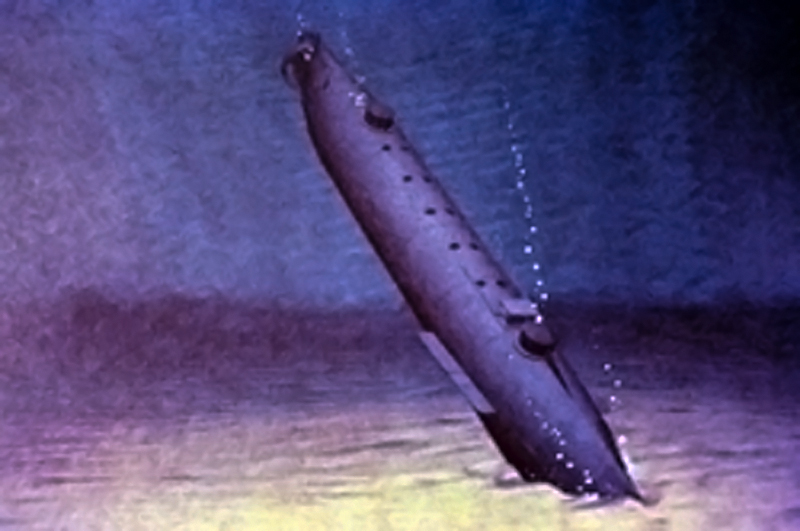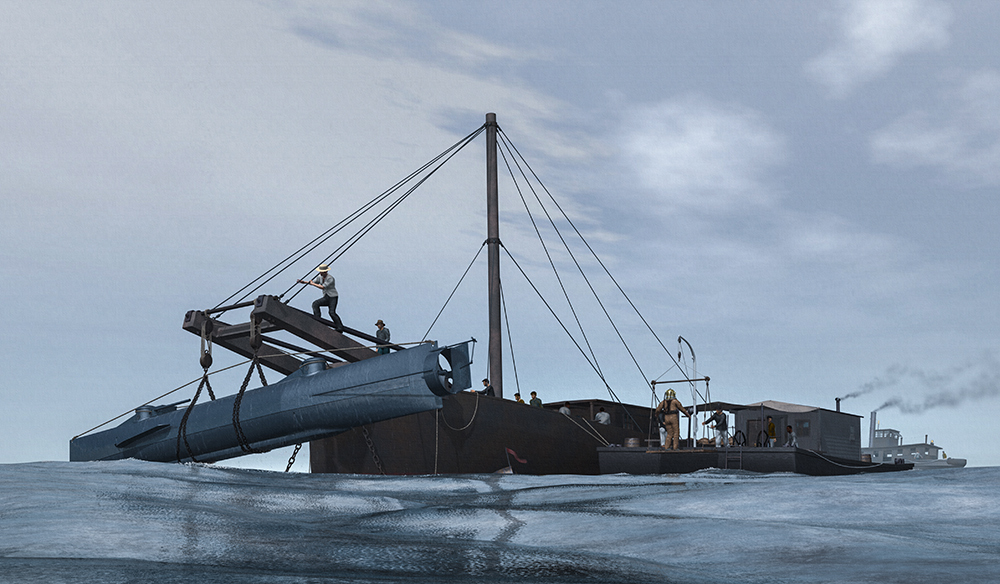Michael Cane
Nicholas Davis
Frank Doyle
Charles Hasker (survived)
John Kelly
Lt. John A. Payne (survived)
Absolum Williams
William Robinson (survived)
The H. L. Hunley arrived in Charleston on August 12th, 1863, accompanied by James McClintock and Gus Whitney, one of the investors in the sub. The crew quickly began testing the Hunley in Charleston Harbor. Frustrated by McClintock’s pace, the Confederates seized the Hunley submarine and turned it over to Lt. John Payne, a Navy man assigned to the CSS Chicora.
On August 29th, the Hunley was moored at Fort Johnson, preparing to depart for its first attack on the blockade when it suddenly sank at the dock. There are conflicting stories of what happened: Some claimed the wake of a passing ship flooded into the Hunley’s open hatches, filling it with enough water to sink it. Others claimed the mooring lines of another ship became tangled on the sub, pulling it onto its side until its hatches were underwater. Whatever happened, the result was the same: the Hunley sank immediately, taking five of her crew down to their deaths. Payne, who was standing atop the sub, jumped into the water and was rescued. William Robinson escaped through the aft hatch and Charles Hasker – trapped by the hatch cover – rode the sub to the bottom before freeing himself and swimming to the surface.
It took weeks to retrieve the submarine, and in that time Horace Hunley arrived in Charleston and demanded the submarine be returned to him. Gen. P.G.T. Beauregard granted the request, and Hunley sent for a crew of men from the Park and Lyons Machine Shop in Mobile.



